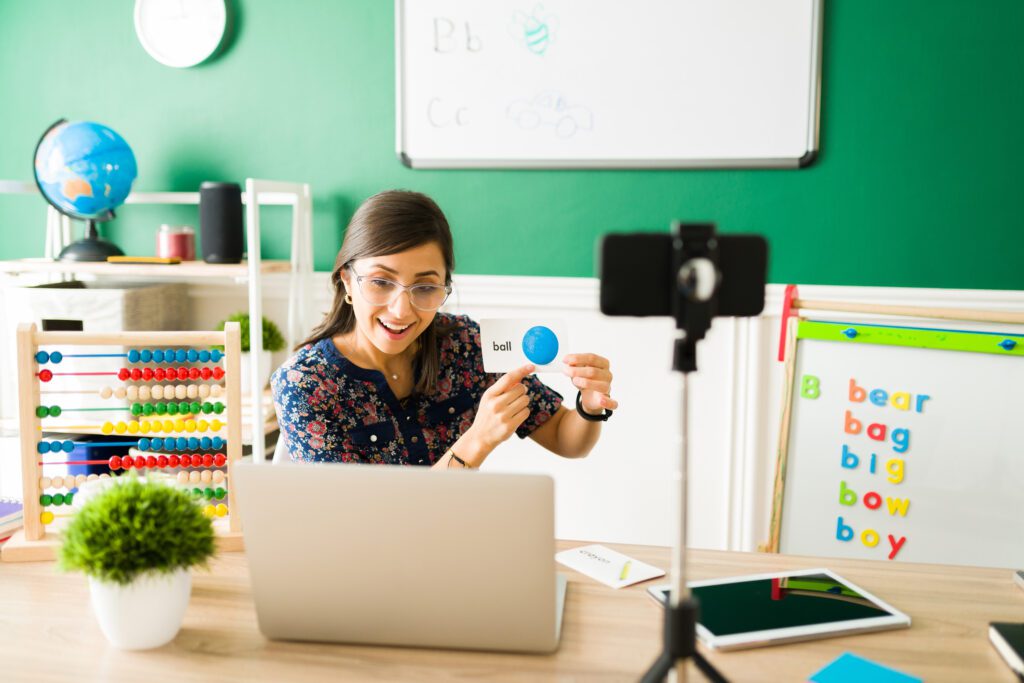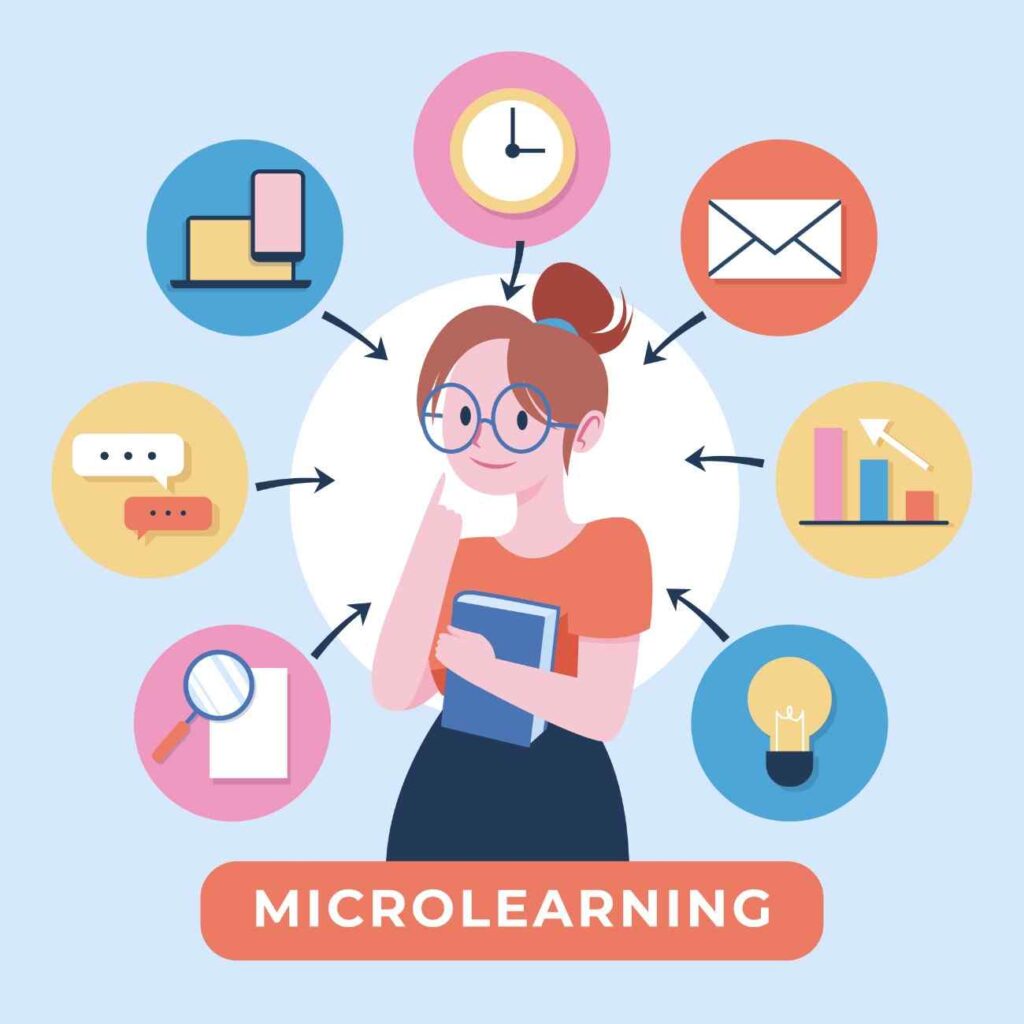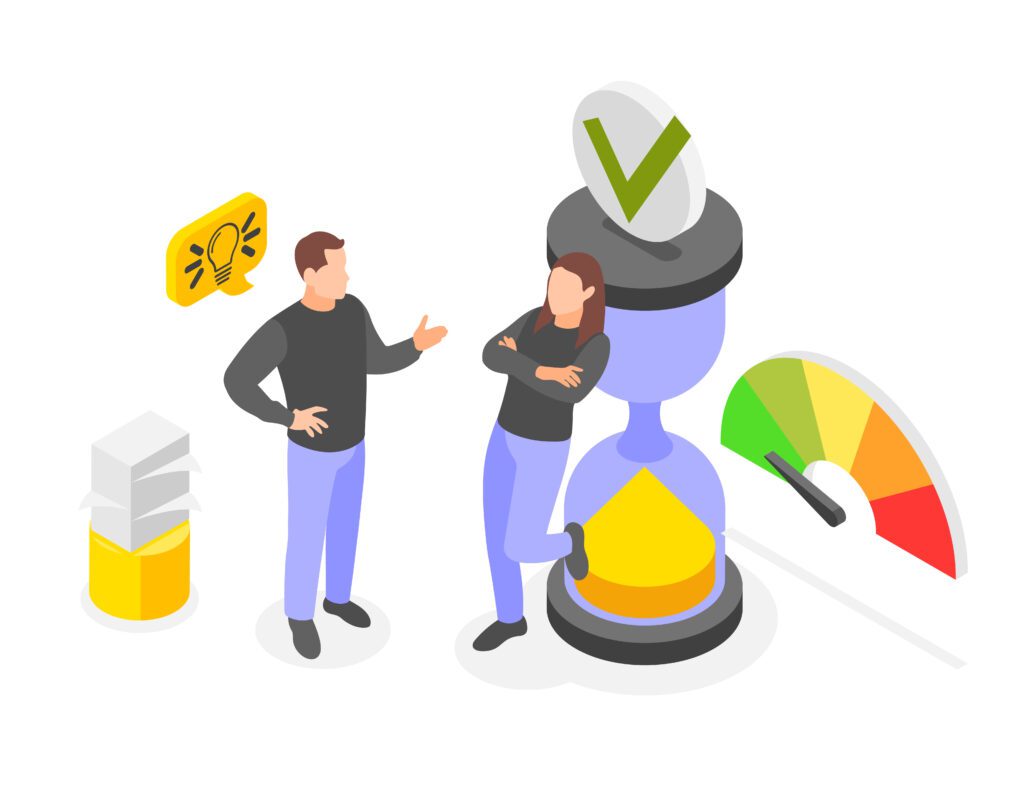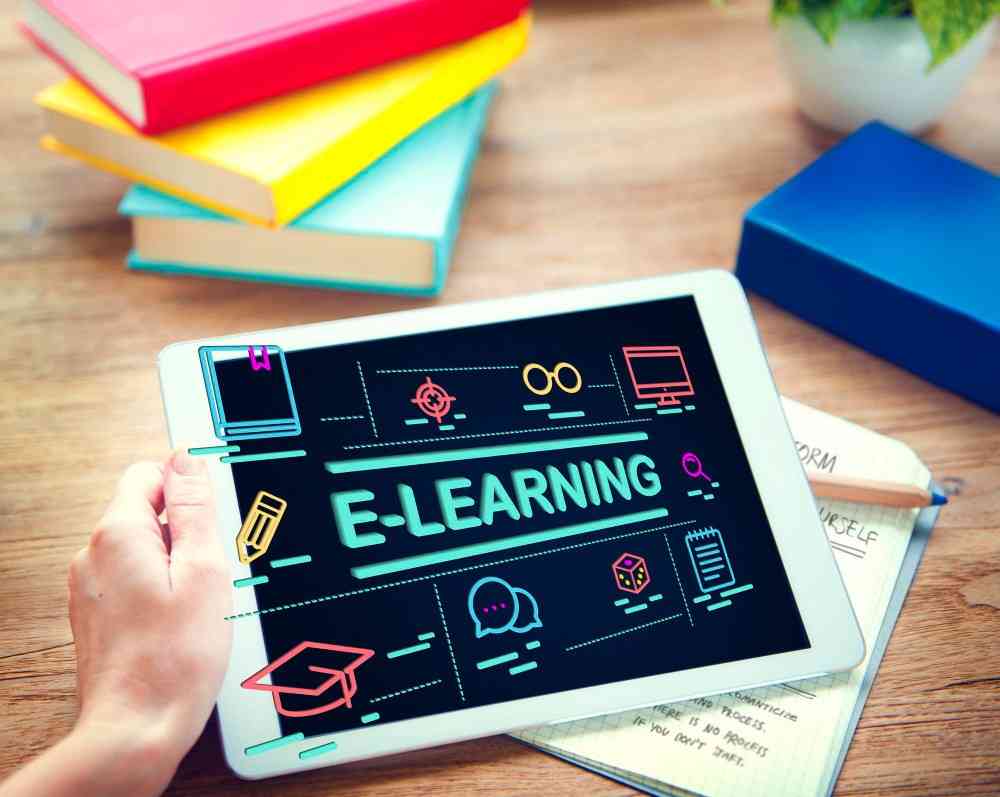Have you ever felt like there’s just too much to learn and not enough time to keep up? Between college lectures, projects, internships, and maybe even a part-time job, your schedule can easily feel overloaded. But what if you could learn smarter—not harder—and still stay ahead in your studies or career goals?
That’s exactly where micro-learning comes in.
Micro-learning is reshaping the way students and professionals learn today. It’s short, focused, and designed for people who want to grow without getting overwhelmed. Whether you’re preparing for exams, learning a new skill online, or just curious about something new, this approach might just be the game-changer you’ve been waiting for.

What Exactly Is Micro-Learning?
Let’s start simple.
Imagine learning a topic not through a 2-hour lecture, but through a 5-minute video, a quick interactive quiz, or a short podcast episode. That’s micro-learning in action.
Micro-learning breaks down big, intimidating topics into bite-sized lessons that are easier to understand and remember. These lessons usually focus on one key concept at a time, helping you absorb information without mental overload.
Think of it as snackable education—you’re still getting the nutrients, just in smaller, tastier portions!
Why Is Micro-Learning Rising So Fast?
Our world runs on speed. Everything—from messages to meals—comes faster than ever. Naturally, learning had to catch up too.
Here are a few reasons why micro-learning is becoming the go-to method for students and professionals worldwide:

1. Busy Lives Demand Flexible Learning
Students today juggle multiple roles. You might attend college, manage internships, prepare for competitive exams, and still want time for friends or hobbies. Traditional classroom setups can’t always keep up with this pace.
Micro-learning gives you the freedom to learn anywhere, anytime, even during short breaks or commutes.
2. Shorter Attention Spans, Smarter Methods
Let’s be honest—sitting through hour-long lectures isn’t always exciting. Studies show that attention tends to dip after just 10-15 minutes.
Micro-learning respects that reality. It delivers crisp, engaging lessons that fit perfectly into your natural attention rhythm.

3. Quick Results Build Confidence
One of the best parts about micro-learning is the instant satisfaction it brings. When you complete a short module, you get a quick win. These small victories boost confidence and motivate you to keep going—like leveling up in a video game!
4. Perfect for Mobile Learning
You already spend hours on your phone—so why not make that time productive? Micro-learning platforms are designed for mobile use, meaning you can learn while waiting for the bus or during a coffee break. Knowledge in your pocket—literally.

How Micro-Learning Works (and Why It Sticks)
So how does something so short make such a lasting impact?
It all comes down to how the brain processes information.
Micro-learning uses repetition and context to help you remember better. When you review small bits of information multiple times, it reinforces memory retention—like practicing chords on a guitar or vocabulary in a new language.
This approach aligns with something called the Ebbinghaus Forgetting Curve, which shows how quickly we forget information if we don’t review it. Micro-learning counters that by making review fast, fun, and frictionless.

Types of Micro-Learning You Can Try
There’s no one-size-fits-all format. The beauty of micro-learning lies in its flexibility. Here are some formats you might already be using without even realizing it:
- Short Videos – Quick explainers or animated clips on platforms like YouTube or Coursera.
- Infographics – Visual summaries that simplify complex ideas in a glance.
- Podcasts & Audiobooks – Great for auditory learners who like learning while commuting.
- Flashcards & Quizzes – Fun tools for memorizing facts or definitions (think Quizlet or Anki).
- Mini-Assignments – Quick practical tasks that apply what you’ve just learned.
- Daily Learning Apps – Apps like Duolingo or Brilliant make learning a 10-minute daily habit.
The Student Advantage: Why Micro-Learning Works for You
As a student, you’re constantly balancing academics, future plans, and personal growth. Here’s why micro-learning might become your new best friend:
1. Learn Without Feeling Overwhelmed
Big textbooks and long lectures can feel intimidating. But when you learn in small chunks, every step feels achievable. You don’t have to conquer an entire chapter in one sitting—just one concept at a time.

2. Study Smarter, Not Longer
Micro-learning encourages focused attention. Instead of multitasking and losing track, you give your full focus for a few minutes, absorb the concept, and move on. Over time, that’s far more efficient than cramming for hours.
3. Fits Into Any Schedule
Whether you’re preparing breakfast or waiting for your class to start, a 5-minute lesson fits right in. Micro-learning turns those “lost moments” in your day into “learning moments.”

4. Perfect for Revising
When exams are near, micro-learning modules are great for quick revisions. Instead of flipping through hundreds of pages, you can revisit short summaries and retain key ideas faster.
5. Keeps You Curious
Micro-learning sparks curiosity. Because the lessons are short, you’re more likely to explore related topics. Before you know it, you’ve learned a full subject—just one mini-lesson at a time!

Is Micro-Learning Replacing Traditional Learning?
Not at all.
Micro-learning isn’t about replacing classrooms or teachers—it’s about enhancing them. Think of it as a supplement, not a substitute.
For instance, a history student can still attend lectures but use micro-learning tools to quickly revise important dates. Or an engineering student might use short tutorial videos to understand difficult equations.
Traditional learning builds depth; micro-learning builds consistency. Together, they form the perfect learning blend.
Micro-Learning in Action: Real-World Examples
To understand how impactful micro-learning is, look at how widely it’s being used:
- Duolingo: Millions use it to learn languages daily, with short 5-minute exercises.
- LinkedIn Learning: Offers mini-courses to help professionals learn skills like Excel or communication in just minutes a day.
- YouTube Edu Channels: Bite-sized videos explain everything from chemistry reactions to coding logic.
- Skillshare & Coursera: Feature micro-courses that let you explore creative and professional topics at your own pace.
These platforms prove that micro-learning works—because it meets you where you are and grows with your goals.

How to Start Your Micro-Learning Journey
Ready to give it a try? Here’s how to make the most of micro-learning as a student:
1. Identify What You Want to Learn
Start small. Do you want to improve your English, learn coding basics, or explore digital marketing? Pick one area and focus on short daily lessons.

2. Use the Right Tools
Apps like Coursera, Udemy, Khan Academy, and YouTube offer free and structured micro-learning paths. You can also use flashcard tools or educational podcasts to reinforce your learning.
3. Set a Routine
Consistency is key. Even 10 minutes daily can add up to big progress. Try setting a specific time—like after breakfast or before bed—to make it a habit.

4. Combine Learning Styles
Mix videos with notes, quizzes, or short readings. Different formats activate different parts of your brain, making learning more effective.
5. Reflect on Your Progress
Keep a short journal or tracker of what you’ve learned each week. Seeing your growth in small steps is incredibly motivating!

Challenges of Micro-Learning (and How to Beat Them)
No system is perfect, right? Micro-learning has a few hurdles—but they’re easy to overcome once you’re aware of them.
1. Lack of Depth
Short lessons might not go deep into complex topics. The solution? Use micro-learning for quick understanding, then explore full courses when you’re ready to dive deeper.
2. Distractions
Since it’s mostly digital, distractions are real. Try setting your phone to “Do Not Disturb” mode while learning to stay focused.
3. Too Many Choices
The internet is full of learning platforms—it’s easy to feel lost. Start with one trusted source and gradually explore others.
Remember, the goal isn’t to learn everything—it’s to keep learning something every day.
The Future of Micro-Learning
Here’s an exciting thought: the future of education might be built on micro-moments.
With AI, gamification, and adaptive learning tools, courses will get even more personalized. Imagine an app that knows exactly what you struggle with and serves up a 3-minute lesson just for that!
Schools and universities are already adopting micro-learning models to supplement lessons. Corporate training and skill-based education are following suit. For students, this means endless opportunities to learn faster, remember longer, and stay motivated.

Why Micro-Learning Matters More Than Ever
In a fast-moving world, learning agility—the ability to learn, unlearn, and relearn quickly—is the ultimate superpower.
Micro-learning trains you in exactly that. It builds the habit of continuous learning in short, enjoyable bursts.
You don’t need to wait for the “right time” or a full-fledged course. Learning is now in your control—accessible anytime, anywhere.
Conclusion: Small Steps, Big Impact
Let’s be real—being a student today isn’t easy. Between tight schedules, growing competition, and endless distractions, learning can feel like a mountain to climb. But here’s the truth: you don’t need to climb it all at once.
With micro-learning, you climb one small step at a time. Each short lesson, video, or quiz moves you forward—without the stress or pressure.
So the next time you have 10 spare minutes, instead of scrolling aimlessly, open a learning app or video. Learn something new. Grow just a little more. Because that’s how real progress happens—not overnight, but over time, one micro-moment at a time.

FAQ:
1. What exactly is micro-learning, and why is everyone talking about it?
Micro-learning is all about learning in small, focused bursts instead of long study sessions. It’s gaining attention because it fits perfectly into busy student lives—quick videos, quizzes, or infographics that help you learn something new in minutes, not hours.
2. Can micro-learning really replace traditional studying methods?
Not entirely—and it doesn’t have to! Micro-learning works best alongside traditional study. Think of it as your power booster: short lessons for quick understanding and memory refreshers before exams.
3. How can I use micro-learning in my daily routine?
Super easy! You can learn during your commute, while waiting in line, or before bed. Try watching a 5-minute video, using flashcards, or listening to a mini podcast episode. The secret is consistency, not duration.
4. Does micro-learning actually help with long-term memory?
Yes! Micro-learning uses repetition and bite-sized focus to strengthen memory retention. When you learn small chunks repeatedly, your brain holds onto information longer—no more “study today, forget tomorrow” moments!
5. What are the best apps or platforms for micro-learning?
Some popular ones include Duolingo for languages, Khan Academy for academics, LinkedIn Learning for career skills, and Quizlet for quick revision. Each one makes micro-learning fun, fast, and totally student-friendly.
Disclaimer:
The information provided in this blog is for general informational and educational purposes only. Mantech Publications is not affiliated, associated, authorized, endorsed by, or in any way officially connected with any brands, companies, organizations, or institutions mentioned in the content. The views and opinions expressed in the blog posts are solely those of the individual authors and do not necessarily reflect the official policy, position, or opinions of Mantech Publications. While efforts are made to ensure the accuracy and reliability of the information provided, Mantech Publications and its management accept no responsibility or liability for any loss, damage, or inconvenience caused as a result of reliance on the material published on this website.






Leave a Reply